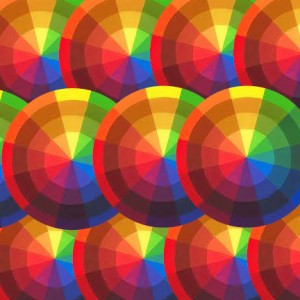
Want to be let in on an industry insider secret? Having a basic grasp on color theory (the nature of colors and how they interact with one another) will immensely improve your decorating skills.
Understanding the color wheel is a great way to start.
Thanks to Sir Isaac Newton, we can easily see the relationships between colors. In 1672, Newton held up a crystal prism to the light and saw the colors of the rainbow separated. After imagining the spectrum in a circle, the color wheel was born.
There are 12 hues represented on the color wheel. There are three primary colors (red, yellow and blue), three secondary colors (green, orange and violet) and six tertiary colors (which are formed by mixing a primary color with a secondary color.
The tertiary colors are: red-orange, yellow-orange, yellow-green, blue-green, blue-violet and red-violet.
Primary colors are considered to be the ‘pure colors’ because they cannot be created by mixing any two colors. Secondary colors are created by adding two equal parts of a primary color. Equal parts of red and blue creates violet.
It’s interesting how color actually works. All surfaces absorb and reflect colors. The human eye can only see the colors that a surface reflects. For example: if you’re looking at a red wall, it is red because the wall (paint color) is absorbing every color but the one you’re seeing.
Therefore, a black surface absorbs all colors and a white surface reflects all colors. This is why a white light directed into a prism reflects all colors of the rainbow.
Although successful color schemes are ultimately deemed beautiful in the eye of the designer, experimenting with proven color combinations can only strengthen your ability to decorate successfully.
